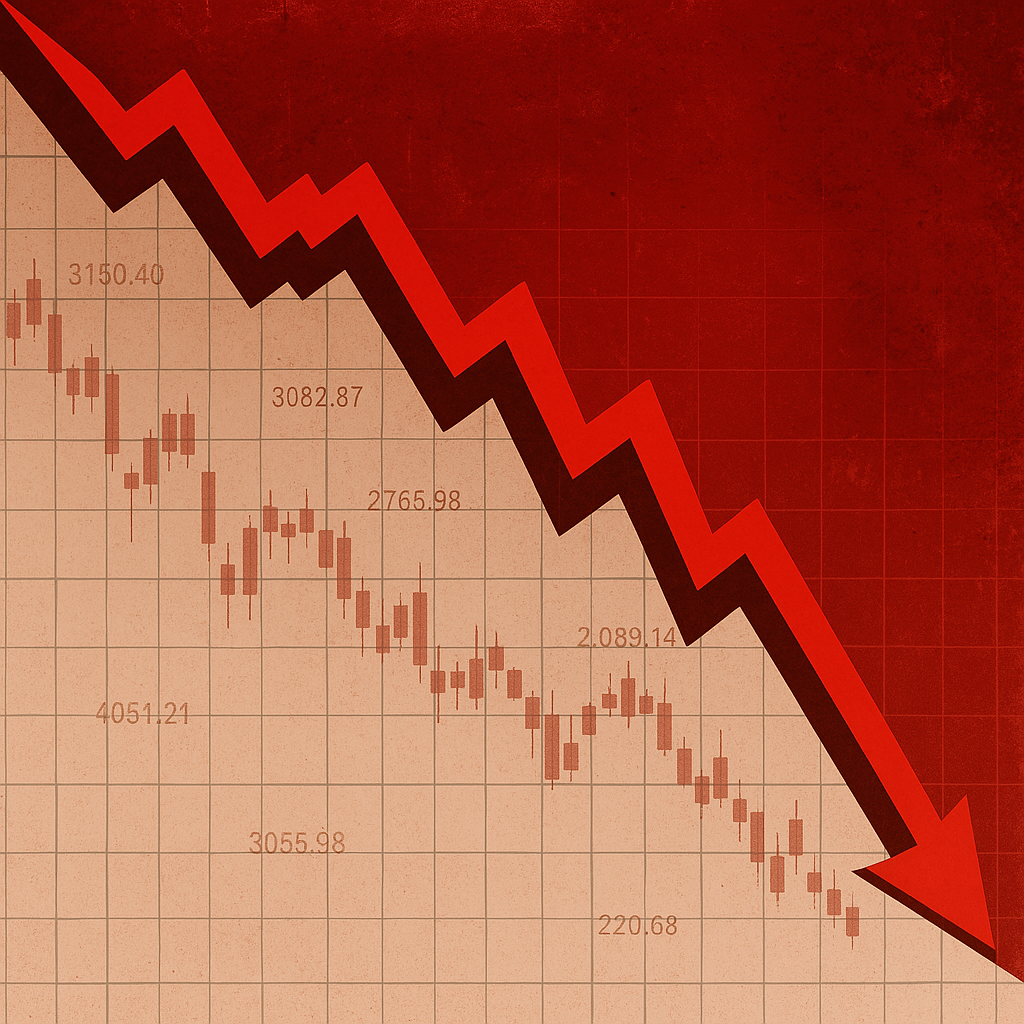Your cart is currently empty!

What to do as a New Investor When the Stock Market Crashes
Posted by:
|
On:
|
Investing in a Bear Market
Last week, on Thursday and Friday (April 7–8, 2025), we saw the worst market selloff since 2020. For context, these sharp drops were driven by uncertainty around tariffs and their potential economic impact. If you’re a newer investor, you might be asking yourself: Should I sell? Were my investment choices sound? It’s easy to feel the urge to get out before things get worse—or to hold on, hoping prices will bounce back. These decisions aren’t easy.
Before we dive deeper, it’s helpful to understand the terms bull market and bear market. A bull market refers to a period when prices are rising, optimism is high, and investor confidence is strong. On the flip side, a bear market happens when prices fall by 20% or more from recent highs, often fueled by fear, uncertainty, and negative economic outlooks. Bear markets can feel scary—especially for new investors—but they’re a normal part of the investing cycle and often create great long-term buying opportunities.
But during market crashes, there are three key areas every investor should understand:
- Have conviction in your investments
- Understand the underlying business fundamentals
- Understand yourself and your habits
Conviction Is Key
First, it’s critical to have conviction in the companies you own. That means understanding why you bought them in the first place.
Take an example from my own portfolio: I recently bought a homebuilder. My thesis? People will always need places to live, and over time, population growth should increase demand for housing. This company focuses on built-to-order homes, meaning they only build after they have a buyer lined up. I liked this model—it reduces the risk of getting stuck with unsold inventory if demand falls. They also maintain a smaller number of speculative homes to compete with resale listings, which seemed like a balanced approach.
Compared to other builders, this company had more stable revenue growth, a solid balance sheet, and what I believe is a nice margin of safety based on its intrinsic value. So, what happened after I bought it? It dropped around 10%.
No investor wants to see red—but because the fundamentals haven’t changed, I’m still happy holding it long-term. If the company started losing money or radically shifted its strategy, I’d re-evaluate. Until then, I’m sticking with my thesis.
Understand the Business Fundamentals
Before buying any stock, it’s crucial to understand how the business works. Ask questions like:
- How does the company make money?
- What are its major costs?
- Is it financially healthy?
- What risks could threaten its success?
Back to the homebuilder example: They make money by selling homes. Their costs include land, materials, and labor. To assess their financial health, I looked at their balance sheet—specifically debt levels, cash reserves, and assets. I like to see a low debt-to-equity ratio and enough cash to cover near-term obligations. Then I reviewed revenue and cash flow trends to confirm the business can sustain itself and grow.
Yes, tariffs could push up material costs. Inflation could cool housing demand. But so far, we haven’t seen these factors hit the business directly. Fundamentals don’t change overnight.
If you’re unsure whether a business is still on track, watch its quarterly reports. You can find them on the SEC’s website. Analyze before you act. Don’t sell just because the market is down—sell because the business no longer fits your thesis.
Understand Yourself as an Investor
This part is often overlooked, but it’s just as important: you need to know yourself.
If watching your portfolio drop triggers a fight-or-flight response, that’s a signal to step back. Our instinct is to follow the crowd—and when everyone else is panic-selling, fear sets in. But now is the time to stay disciplined.
Being a long-term investor often means being a contrarian. That’s where big gains can come from. The market has always recovered over time. If the fundamentals of your businesses are intact, hold on. The market will bounce back—it always has.
Tactics to Manage Emotion
Everyone handles volatility differently. One tactic that works for me is treating investing like paying a bill. At the beginning of each month, I invest a set amount—no matter what the market is doing.
This helps in two ways:
- It builds a consistent habit that I don’t break, even when I’m nervous.
- It allows me to naturally buy more when prices are low and avoid over-investing when the market is overheated.
This is money I don’t need right now. It’s for my future self. It’s money I’m willing to risk for the chance at financial freedom.
If you need the money within five years, the stock market isn’t the best place for it. There’s always a risk of short-term loss. But over ten years? The odds of losing money shrink dramatically. In fact, we’ve never had a 20-year period where the overall market didn’t gain.
Final Thoughts
Some companies may still fail—even in a bull market. But long-term investors don’t put their faith in hype or headlines. They invest with conviction, not emotion.
So when markets crash, don’t panic. Reflect on your thesis. Revisit the fundamentals. Know yourself. And remember why you started investing in the first place.
Disclosure: The content provided in this blog is for informational and educational purposes only and does not constitute investment advice. Always perform your own research and consult with a licensed financial advisor before making any investment decisions. For our full disclosure go here to our privacy page.


One response to “What to do as a New Investor When the Stock Market Crashes”
Good article